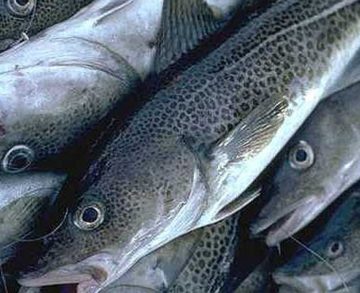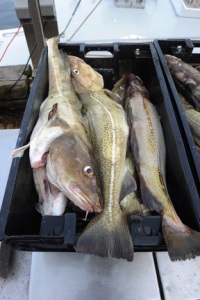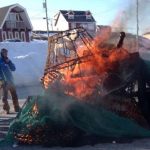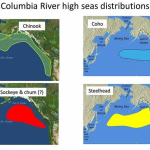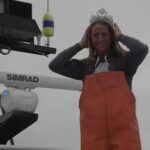Tag Archives: groundfish
Commercial fisheries landings increased more than $25 million in value in 2023
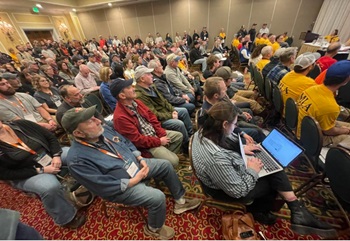 Preliminary numbers for commercial seafood landings in 2023 released today show a strong year for the industry, with commercial fishermen earning $611,277,692 — an increase of $25 million — for 204,684,775 pounds of seafood brought in to state docks. Despite a warming Gulf of Maine, intense storms and the damage to working waterfronts and lower lobster landings, “the Maine seafood industry continues to be a powerful economic engine for our state,” said Governor Janet Mills. Statewide, 93,734,116 pounds of lobsters landed on docks for a $461,371,720 value, an increase of about $72 million. The value represents what is paid at the docks to fishermen, dollars that flow throughout local communities and the state’s overall economy. Stonington is the top port for commercial seafood value this year, bringing in $47.37 million of value, and the second port, behind Portland, for pounds — 13.98 million. more, >>click to read<< 12:54
Preliminary numbers for commercial seafood landings in 2023 released today show a strong year for the industry, with commercial fishermen earning $611,277,692 — an increase of $25 million — for 204,684,775 pounds of seafood brought in to state docks. Despite a warming Gulf of Maine, intense storms and the damage to working waterfronts and lower lobster landings, “the Maine seafood industry continues to be a powerful economic engine for our state,” said Governor Janet Mills. Statewide, 93,734,116 pounds of lobsters landed on docks for a $461,371,720 value, an increase of about $72 million. The value represents what is paid at the docks to fishermen, dollars that flow throughout local communities and the state’s overall economy. Stonington is the top port for commercial seafood value this year, bringing in $47.37 million of value, and the second port, behind Portland, for pounds — 13.98 million. more, >>click to read<< 12:54

SEA-NL on increase in snow crab processing capacity
“More competition in the processing sector should mean more opportunity for inshore boats to land crab quotas faster, with less expense, and safer for all hands,” says Ryan Cleary, SEA-NL’s Executive Director. The province’s Fish Processing Licensing Board today approved two of four applications for fish processing licenses — including a new primary processing license for groundfish, whelk, and snow crab (2.5 million/lbs) for St. Mary’s Bay Fisheries Ltd., and doubling the amount of crab Dandy Dan’s Fish Market of Argentia can purchase to two million pounds per year. >click to read< 11:29
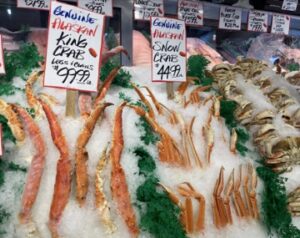
NPFMC wants more information on decline in king crab stocks
Two decades into the decline of Bristol Bay red king crab, with stocks now too low for a commercial fishery, the fight continues at the North Pacific Fishery Management Council over what protections to take for the crab in danger and how soon to do it. Alaska Bering Sea Crabbers had hoped that federal fisheries managers might put restrictions on groundfish fishing in the Red King Crab Savings Area, as well as other measures, during the NPFMC’s April meeting in Anchorage. Instead, the council voted to have staff prepare an expanded discussion paper for its October meeting that includes analysis of the impacts on annual or seasonal closures to pelagic trawl, groundfish, pot and longline gear in the BBRKA, including impacts on target catch, fishing timing relative to crab mating and molting, crab avoidance and other prohibited species catch and non-target species. >click to read< 11:27
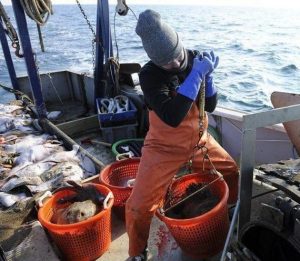
Federal government to increase at-sea monitoring to 100%.
At-sea monitors are workers who collect data on board commercial fishing boats to help inform regulations and management of species. The government approved the new, higher percentage of trip cover on Tuesday, said Michael Pentony, regional administrator with NOAA’s Greater Atlantic Regional Fisheries Office in Gloucester. The rules apply to valuable species that are harvested in the Northeast such as cod, haddock and flounder. Pentony said the new rules will replace the old process of calculating a target for the level of monitoring coverage every year. The coverage target will instead be 100% for four years as long as federal funding can support agency and industry costs, he wrote in a letter to fishery managers. >click to read< 16:24
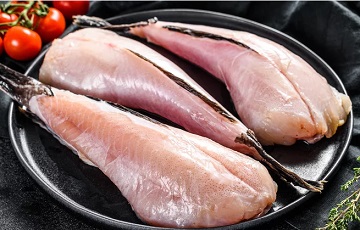
Everything You Need To Know About Monkfish
Monkfish certainly isn’t the prettiest fish in the sea. For everyone from the monkfish novice trying to get past its unseemly appearance to the aficionado looking to deepen their knowledge of the delicious groundfish, this guide is the perfect one-stop source. Learn to source and choose monkfish, store it properly, and serve it in recipes that will have your guests grinning from ear to ear! Unlike many other white fish, monkfish boasts no small bones. As such, monkfish is easy to prepare, and many fishmongers sell it as ready-to-cook steaks or fillets. Photos, also, scroll the page for lobster and beef! >click to read< 17:21

“DFO operates in denial of Reality”- Scientist says seal predation not having a significant impact on spawning cod stocks
Instead, Karen Dwyer, weighing in on the contentious debate over the health of cod stocks, said Thursday that environmental factors and a limited supply of the cod’s primary food source — capelin — are more to blame.,, Trinity Bay fisherman Keith Smith said DFO continues to downplay the impact of seal predation on cod. “It’s like DFO operate in denial of reality,” Smith said. “Fishing mortality is at an all-time low while natural mortality, likely led by the growing seal population that consumes vast amounts of both capelin and cod, remains high,”,,, >click to read< 11:04
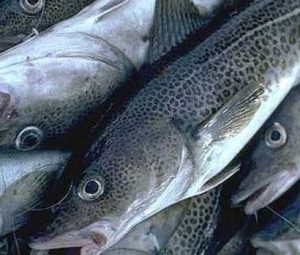
Cod could choke catch of other fish
The New England Fishery Management Council approved the management framework that sets Northeast multispecies groundfish catch limits for 2020-2022 earlier this month. And local groundfishermen are looking at significant increases in several flounder stocks, American plaice and haddock. But the state of the cod fishery in the Gulf of Maine and on Georges Bank remains a point of contention. >click to read< 09:06
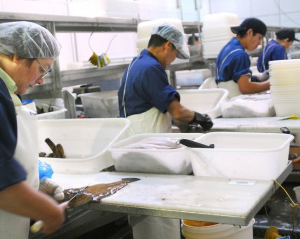
Longtime Bellingham fish processor to close portion of operation and reduce staff
A longtime seafood processor is shutting down a part of its operations, resulting in the layoff of about 40 workers. Bornstein Seafoods CEO Colin Bornstein said in an interview with The Bellingham Herald that the business is closing the groundfish processing portion of its Bellingham operations later this month. It will keep its value-added albacore tuna operations intact, which employs about 25 people. The decision to close the groundfish processing portion was because of changing regulations and commercial fishing fleet consolidations, Bornstein said. >click to read< 16:58
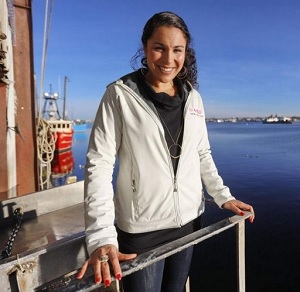
Canastra’s drive helping keep groundfishing alive
Among the grizzled lifelong fishermen sat six-year-old Cassie Canastra. She staked claim to the seat toward the right side of the second table in the small room where thousands of pounds of fish were auctioned off each day. Her spot faced the television and was the closest to the sweets brought by her father, Raymond. Her pastry of choice: Malassadas. Her father and uncle Richie both have fishing running through their blood. The gene was passed down to Cassie. >click to read< 13:56
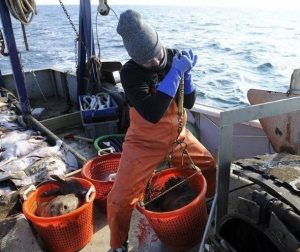
Groundfishermen not hooked by monitoring alternatives
For more than two years, the New England Fishery Management Council has worked on an intricate groundfish monitoring amendment that could have wide-scale economic and regulatory consequences for groundfishermen. It has been a thorny, winding path that involves a host of groundfish committees, plan development teams and assorted staff within the far-flung fisheries regulatory landscape. Now a group of groundfishermen are weighing in. And they are not pleased. >click to read<07:53

FISH-NL against proposals to grant Labrador harvesters 25% of northern cod quota; calls on FFAW-Unifor to reveal its stand
The Federation of Independent Sea Harvesters of Newfoundland and Labrador (FISH-NL) is against proposals that could see 25 per cent of the northern cod quota allocated to harvesters from Labrador and processed there. “No one group or organization should be entitled to a percentage of the overall total allowable catch,” says Ryan Cleary, President of FISH-NL. “The inshore harvesters of Newfoundland and Labrador as a whole must be the principle beneficiary of adjacent fish stocks.” >click to read<11:14
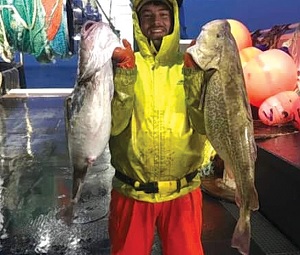
Report From the Grounds
The bitter blast of winter, ice on salt water and nets straining with cod — a world few of us will witness. It’s everyday sight for Newport fisherman Kelly Bennett, who has spent the greater part of the last decade traveling to Alaska to work on Newport trawlers plying the northern waters for pollock, cod and groundfish. Working aboard the Aleutian Challenger, Bennett is away for up to four months at a time, toiling in a fishery called joint venture, where he — amazingly — doesn’t have to handle fish, except the few that fall out of the net. >click to read<19:00
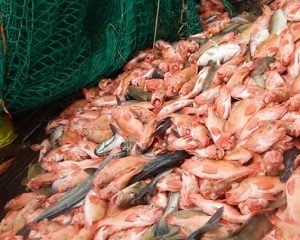
25-year-moratorium could be lifted as redfish stocks continue to increase in Gulf of St. Lawrence
Island fishermen and the province are working together to make surGulf of St. Lawrence P.E.I. gets its fair share of the redfish quota if the the federal government decides to reopen the industry in the future. A significant increase in redfish stock in the Gulf of St. Lawrence is spurring an interest in reopening redfish harvesting after a moratorium has been in place for nearly 25 years. A renewed commercial fishery would be at least two years away, said Dave MacEwen, P.E.I.’s manager of marine fisheries. Other provinces will be looking for their share of the quota as well, and he wants to make sure Island fishermen are “full participants.” >click to read<19:51
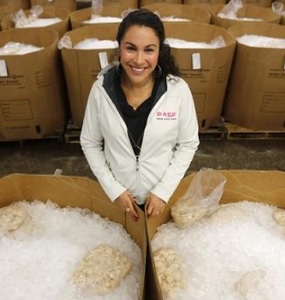
SouthCoast Woman of the Year: Canastra’s drive helping keep groundfishing alive
Among the grizzled lifelong fishermen sat six-year-old Cassie Canastra. She staked claim to the seat toward the right side of the second table in the small room where thousands of pounds of fish were auctioned off each day. Her spot faced the television and was the closest to the sweets brought by her father, Raymond. Her pastry of choice: Malasadas. “She knew I was going to go to the Portuguese bakery before work. She wanted that,” Ray said with a loud chuckle. “That’s the truth.” The malasadas certainly didn’t deter her from begging her parents to wake hours before sunrise to arrive at the Buyers and Sellers Exchange seafood auction for 4:30 a.m. >click to read<11:56

Don Cuddy: Sector reopenings benefit to New Bedford remains to be seen
The news emerged on July 19 that NOAA approved a plan that may now permit some New Bedford fishermen back to work. ,,,So while this decision is a small step forward for the groundfish industry here, it is not yet time to set the church bells ringing since the majority of the inactive quota is owned by inactive fishermen. When the catch share system was introduced in 2010 it gave all permit holders a slice of the pie- the “pie” being a share of the TAC, or total allowable catch, for the annual fishing year, which for groundfish begins on May 1. Individual allocations were based on a permit holder’s catch history over a ten-year period from 1998 to 2008, I believe it was. That effectively means all of the cod, haddock and flounder swimming around on Georges Bank, more than one hundred miles offshore, have someone’s name on their backs, similar to a herd of cattle,,, leased , sold, or traded,,, >click to read<20:53
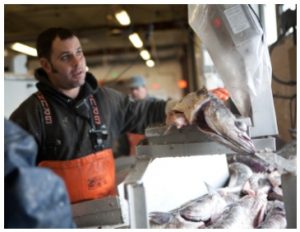
NEFMC Discusses Offshore Wind, Clam Dredge FW, Skates, Groundfish, Herring, IFM, and More at Mid-April Meeting
The New England Fishery Management Council met April 17-19 in Mystic, CT and discussed a wide range of issues that touched on everything from industry-funded monitoring to offshore wind, Clam Dredge Framework, Skate Wing Fishery, Northeast Multispecies -Groundfish, Atlantic Herring –River Herring/Shad, The New England Council paid tribute to two retiring Council members –Mark Alexander of Connecticut, left, who served on the Council for 10 years, and Mark Gibson of Rhode Island, >click to read<15:16
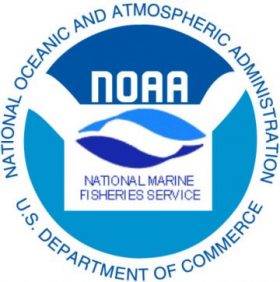
NOAA Announces At-Sea Monitoring 2018 Coverage Levels for Groundfish Sector Fishery
NOAA Fisheries announces that for fishing year 2018 the total target at-sea monitoring coverage level is 15 percent of all groundfish sector trips. This target coverage level is a one percentage point decrease from the 2016 coverage level, which was 16 percent. As the target coverage level is set based on an average of at-sea monitoring data from the past three full groundfish fishing years, this level is set based on data from the 2014-2016 fishing years. >click here to read< 14:45
The production value of Newfoundland and Labrador’s seafood industry reached another record high in 2016.
 It totalled over $1.4 billion last year, an increase of 8.9 per cent over 2015. Fisheries and Land Resources Minister Steve Crocker announced the release of the 2016 Seafood Industry Year in Review today in the House of Assembly, ahead of his trip to Boston with Premier Dwight Ball for Seafood Expo North America 2017 on Sunday. “We will be accompanying our world-class seafood marketing team and the Newfoundland and Labrador delegation to join the 1,200 companies, and over 21,000 buyers, suppliers, media and other seafood professionals at North America’s largest seafood trade event,” Crocker said. Other highlights of the report include: aquaculture production, employment, value of landings, shellfish, lobster, groundfish, seal hunt, Read the article here, and click here for the full report 08:56
It totalled over $1.4 billion last year, an increase of 8.9 per cent over 2015. Fisheries and Land Resources Minister Steve Crocker announced the release of the 2016 Seafood Industry Year in Review today in the House of Assembly, ahead of his trip to Boston with Premier Dwight Ball for Seafood Expo North America 2017 on Sunday. “We will be accompanying our world-class seafood marketing team and the Newfoundland and Labrador delegation to join the 1,200 companies, and over 21,000 buyers, suppliers, media and other seafood professionals at North America’s largest seafood trade event,” Crocker said. Other highlights of the report include: aquaculture production, employment, value of landings, shellfish, lobster, groundfish, seal hunt, Read the article here, and click here for the full report 08:56
Savage quota cuts will finish off the New England small boat groundfish fishery
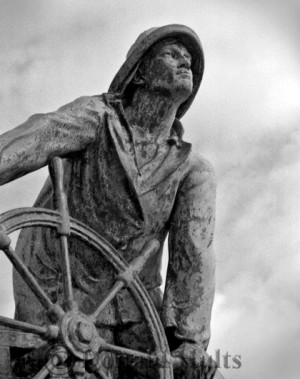 Fishermen and fishing stakeholders say the darkness that has descended on the Northeast groundfish fishery over the past three years is only going to grow deeper in 2016, with some fishing stakeholders envisioning the final collapse of the small-boat industry due to slashed quotas for species they believe are abundant. “We’ve never had a greater gap between what the fishermen are seeing on the water and what the scientists are saying,” Giacalone said. “Never.” Read the rest here, if you can stand it. 06:23
Fishermen and fishing stakeholders say the darkness that has descended on the Northeast groundfish fishery over the past three years is only going to grow deeper in 2016, with some fishing stakeholders envisioning the final collapse of the small-boat industry due to slashed quotas for species they believe are abundant. “We’ve never had a greater gap between what the fishermen are seeing on the water and what the scientists are saying,” Giacalone said. “Never.” Read the rest here, if you can stand it. 06:23
State working on flatfish tax fix to capture foregone revenue
 A state tax rate glitch let groundfish trawlers off the hook for more than $10 million of fishery taxes in the last half decade, and there’s no concrete fix just yet. The fishery resource landing tax taxes groundfish based on ex-vessel price. Processors turn flatfish caught as bycatch into low-value fishmeal, so the only known ex-vessel price for certain flatfish species is artificially low. Nine species have this price uncertainty, but most flatfish volume comes from yellowfin sole and Atka mackerel. By only having an ex-vessel value based on the price paid for bycatch turned into fishmeal, the state has no idea what the ex-vessel value is for the direct flatfish fishery that has annual harvests measured in hundreds of thousands of metric tons. Read the article here 08:23
A state tax rate glitch let groundfish trawlers off the hook for more than $10 million of fishery taxes in the last half decade, and there’s no concrete fix just yet. The fishery resource landing tax taxes groundfish based on ex-vessel price. Processors turn flatfish caught as bycatch into low-value fishmeal, so the only known ex-vessel price for certain flatfish species is artificially low. Nine species have this price uncertainty, but most flatfish volume comes from yellowfin sole and Atka mackerel. By only having an ex-vessel value based on the price paid for bycatch turned into fishmeal, the state has no idea what the ex-vessel value is for the direct flatfish fishery that has annual harvests measured in hundreds of thousands of metric tons. Read the article here 08:23
Groundfish boosts Alaska fishing jobs, 84% of total fish poundage
 Alaska’s seafood industry puts more people to work than oil and gas, mining, tourism and logging combined. And the numbers continue to grow, thanks to increased catches of groundfish, primarily pollock and cod. According to the November issue of by the state Department of Labor, fishing employment grew by 0.7 percent last year, boosted by 350 jobs in groundfish harvesting – a nearly 25 percent increase. Gains were made in every month of the year, with employment records set in March and December. Read the rest here 16:08
Alaska’s seafood industry puts more people to work than oil and gas, mining, tourism and logging combined. And the numbers continue to grow, thanks to increased catches of groundfish, primarily pollock and cod. According to the November issue of by the state Department of Labor, fishing employment grew by 0.7 percent last year, boosted by 350 jobs in groundfish harvesting – a nearly 25 percent increase. Gains were made in every month of the year, with employment records set in March and December. Read the rest here 16:08
2014 study shows haddock is booming and cod remains in decline in the northeast
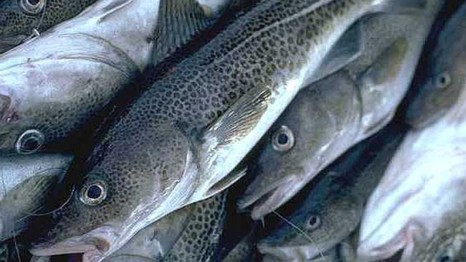 U.S. government scientists reporting on fish stocks off New England are reaching the same conclusions as their Canadian counterparts who have found that haddock is booming and cod remains in decline in the northeast. On Monday, the Northeast Fisheries Science Centre at Woods Hole, Massachusettes released an assessment of 20 northeast ground fish stocks from 2014 surveys. “The rapid increase in haddock, redfish, pollock and white hake contrasts sharply with the decline of cod and the flatfish species,” the report states. Read the rest here 09:13
U.S. government scientists reporting on fish stocks off New England are reaching the same conclusions as their Canadian counterparts who have found that haddock is booming and cod remains in decline in the northeast. On Monday, the Northeast Fisheries Science Centre at Woods Hole, Massachusettes released an assessment of 20 northeast ground fish stocks from 2014 surveys. “The rapid increase in haddock, redfish, pollock and white hake contrasts sharply with the decline of cod and the flatfish species,” the report states. Read the rest here 09:13
Pacific Fishery Fishery Management Council meets Sept. 10-17 in Spokane
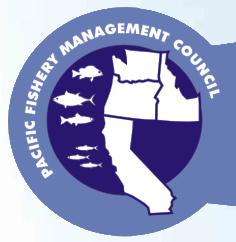 The Pacific Fishery Fishery Managementwill meet Wednesday for a week-long session, Sept. 10-17, in Spokane to address issues related to groundfish, highly migratory species, coastal pelagic species, salmon, ecosystem management and habitat matters. Read the rest here 18:10
The Pacific Fishery Fishery Managementwill meet Wednesday for a week-long session, Sept. 10-17, in Spokane to address issues related to groundfish, highly migratory species, coastal pelagic species, salmon, ecosystem management and habitat matters. Read the rest here 18:10
OUR OPINION: NOAA succeeds only in making fishermen extinct
 Simply put, New England fishermen will likely be extinct by 2014. Years of unfunded, unscientific and punitive laws handed down by the National Oceanic and Atmospheric Administration have cast fishermen adrift in a sea of regulations designed to drown them. Ostensibly, NOAA’s goal was to protect cod and other groundfish from extinction, yet none of its measures have worked. Read more
Simply put, New England fishermen will likely be extinct by 2014. Years of unfunded, unscientific and punitive laws handed down by the National Oceanic and Atmospheric Administration have cast fishermen adrift in a sea of regulations designed to drown them. Ostensibly, NOAA’s goal was to protect cod and other groundfish from extinction, yet none of its measures have worked. Read more






